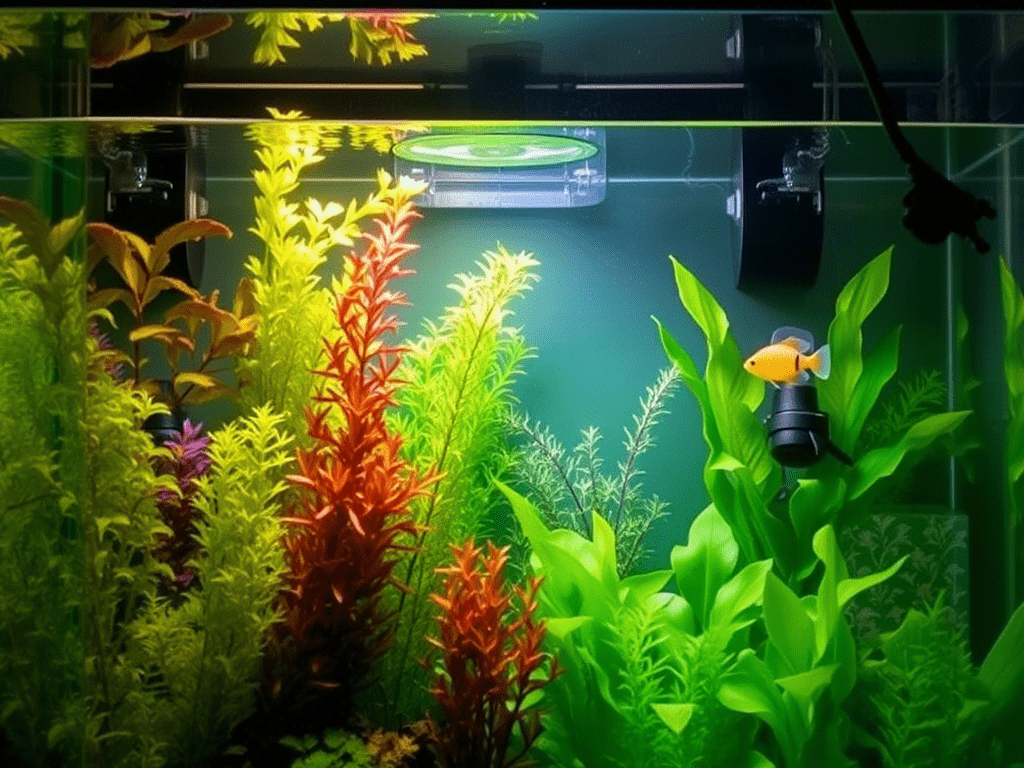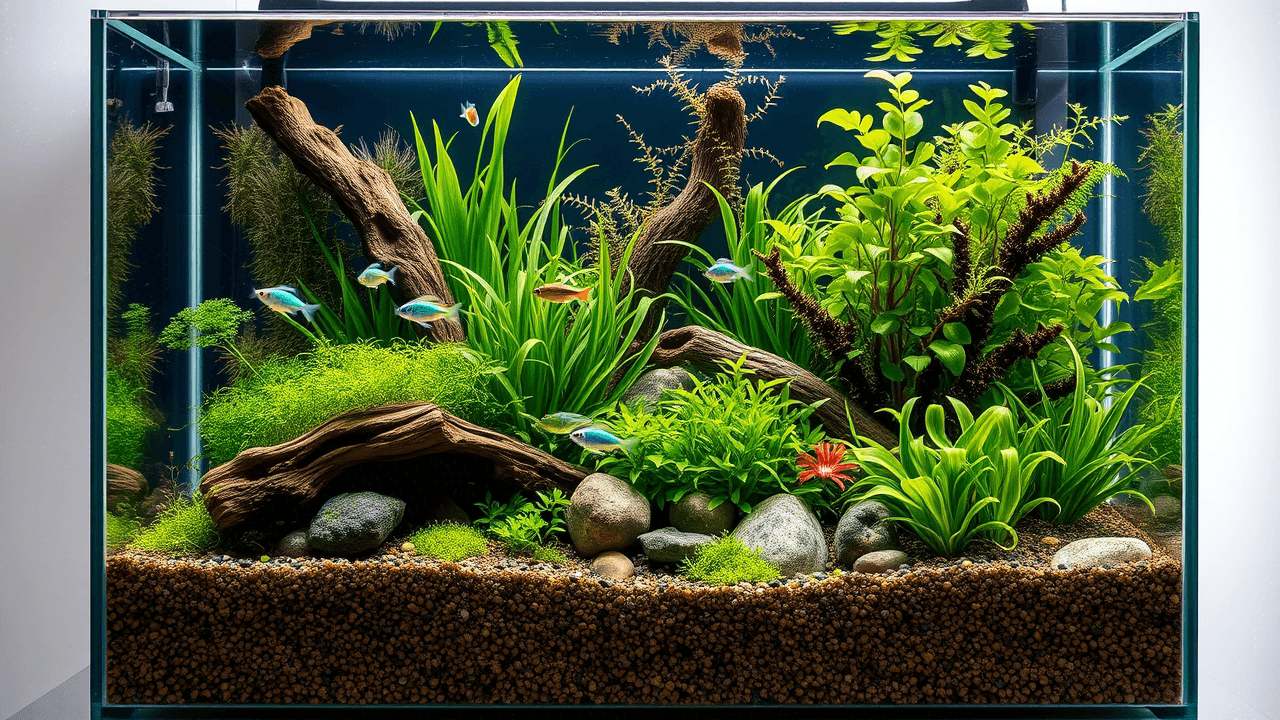Introduction
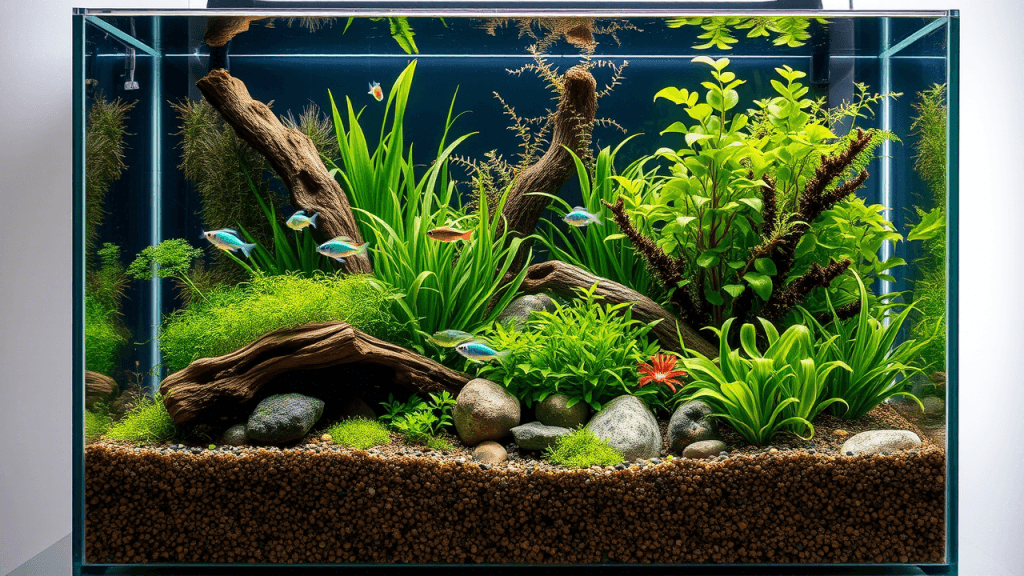
Creating a self-sustaining aquarium is like establishing a miniature ecosystem that requires minimal intervention while providing maximum enjoyment. This natural approach to aquarium keeping not only reduces maintenance time but also creates a more authentic habitat for aquatic life. A properly balanced, self-sustaining aquarium mimics natural ecosystems where plants, fish, beneficial bacteria, and other microorganisms work together in perfect harmony. According to recent surveys, over 65% of long-term aquarium enthusiasts aim to establish some level of self-sustainability in their tanks. This comprehensive guide will walk you through the essential steps to create your own thriving underwater world that largely maintains itself.
What Makes an Aquarium Self-Sustaining?
A truly self-sustaining aquarium achieves ecological balance where:
- Plants absorb fish waste as nutrients for growth
- Beneficial bacteria convert toxic ammonia into less harmful compounds
- Algae control happens naturally through balanced lighting and competing plants
- Food chains are establish with minimal external inputs
- Water quality remains stable without frequent water changes
Research shows that well-established, self-sustaining tanks can maintain water parameters within acceptable ranges for up to 3-6 months with minimal intervention.
Essential Components for a Self-Sustaining Aquarium
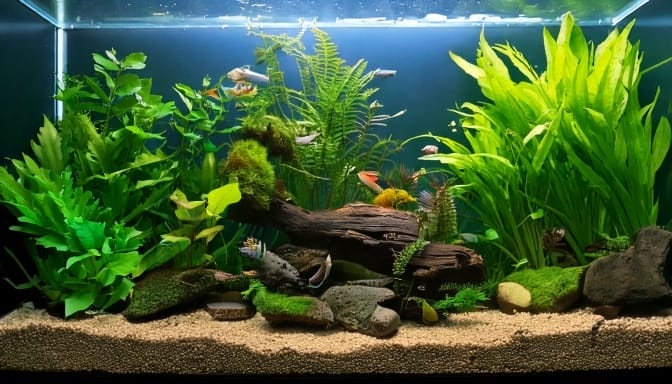
1. Selecting the Right Tank Size
Size matters significantly when establishing a self-sustaining ecosystem. Larger tanks provide greater stability:
- Minimum 20 gallons is recommended for beginners
- 40+ gallons offers optimal stability
- Larger volumes buffer against parameter fluctuations
A 2021 study of successful walstad-method tanks found that aquariums larger than 30 gallons had a 78% higher success rate in achieving long-term stability compared to smaller volumes.
2. Creating the Perfect Substrate Foundation
Your substrate isn’t just for aesthetics—it’s the foundation of your ecosystem:
- Organic soil base (1-1.5 inches) provides nutrients for plants
- Cap with fine gravel (1-2 inches) to prevent soil clouding
- Consider adding laterite or clay for additional iron and mineral content
Pro tip: Mineralized topsoil prepared through several wet/dry cycles significantly reduces the initial ammonia spike that typically occurs when setting up soil-based tanks.
3. Selecting and Arranging Live Plants
Plants are the workhorses of a self-sustaining system, with research showing they can remove up to 80% of nitrates in well-established tanks:
- Fast-growing stem plants like Hygrophila and Rotala for nutrient uptake
- Rooted plants such as Amazon swords and Cryptocorynes for substrate stability
- Floating plants like duckweed or water lettuce for excess nutrient control
- Slow growers like Anubias for long-term stability
Aim for at least 70-80% plant coverage with diverse species. Plant densely from the start—studies show this approach reduces algae blooms by up to 60% during the critical establishment phase.
4. Establishing the Nitrogen Cycle
A robust nitrogen cycle is essential for breaking down toxic waste:
- Patient approach – Allow 4-6 weeks for complete cycling
- Use seed material from established tanks to accelerate the process
- Test regularly for ammonia, nitrite, and nitrate levels
- Consider silent cycling with plants before adding fish
5. Selecting Compatible Fish and Livestock
The right balance of inhabitants makes or breaks a self-sustaining system:
- Stock lightly – Aim for only 50-60% of what conventional guidelines suggest
- Choose fish that complement the ecosystem – Small, peaceful species that won’t uproot plants
- Add cleanup crew – Nerite snails, amano shrimp, and otocinclus catfish help control algae and consume detritus
- Consider microorganism diversity – Detritivores like copepods and daphnia complete the food chain
A general rule: maintain less than 1 inch of fish per 3-5 gallons of water in self-sustaining systems, compared to the conventional 1 inch per gallon rule.
Frequently Asked Questions About Self-Sustaining Aquariums
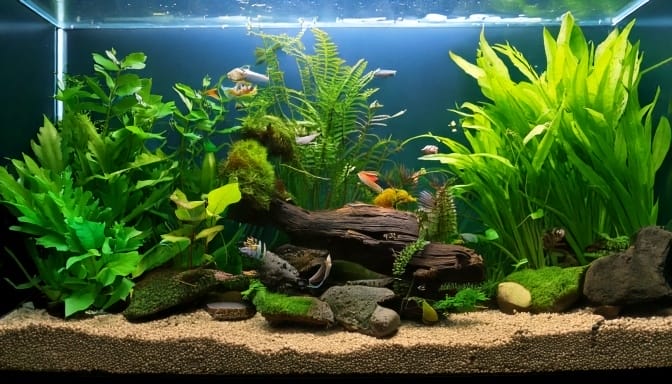
Key Statistics and Insights
- Did you know? A well-planted aquarium can reduce nitrate levels by up to 50%, promoting healthier fish and clearer water.
- Fact: LED lighting can reduce energy consumption by up to 80% compared to traditional lighting, making it an eco-friendly choice.
Overfeeding disrupts the ecosystem by increasing waste buildup. Only feed what your fish can consume in 2–3 minutes.
1. Can I Turn My Existing Aquarium Into a Self-Sustaining One?
Yes! Start by introducing live plants, reducing chemical treatments, and gradually transitioning to natural filtration methods.
2. How Do I Prevent Algae Overgrowth?
Algae blooms can be controlled by:
- Avoiding overfeeding your fish.
- Maintaining proper lighting cycles (8–10 hours daily).
- Adding algae-eating species like snails or Amano shrimp.
3. Do I Still Need a Filter?
While self-sustaining aquariums rely heavily on natural filtration, using a low-energy sponge filter can help maintain water clarity without disrupting the ecosystem.
4. What Are Common Issues in Self-Sustaining Aquariums?
Watch out for:
- Cloudy water: Often caused by overfeeding or poor substrate cleaning during setup.
- Fish stress: Monitor interactions; aggressive species can disrupt harmony.
- Plant overgrowth: Regular pruning ensures plants don’t outcompete each other for nutrients.
Maintenance Tips for Long-Term Success
Even though self-sustaining aquariums require less maintenance than traditional setups, some regular care is still necessary:
- Monitor Water Parameters: Test pH, ammonia, nitrites, and nitrates monthly.
- Prune Plants: Remove dead leaves and trim overgrown plants to maintain balance.
- Top Off Water: Replace evaporated water with dechlorinated water weekly.
- Inspect Fish Behavior: Look for signs of stress or illness.
- Clean Glass Sparingly: Use an algae scraper if needed but avoid disrupting the ecosystem too much.
Why Choose a Self-Sustaining Aquarium?
Creating a self-sustaining aquarium offers numerous benefits beyond its aesthetic appeal:
- Cost Efficiency: Save on water treatments and feeding costs through natural food sources like algae and microorganisms.
- Eco-Friendly: Reduce water waste and chemical usage by relying on natural processes.
- Healthier Environment: Mimic natural habitats for fish and plants, ensuring their well-being.
- Time-Saving: Spend less time on maintenance while enjoying the beauty of aquatic life.
Conclusion
A self-sustaining aquarium is more than just a hobby—it’s an art form that brings nature into your home while promoting sustainability and ecological balance. By following this guide, you can create a thriving underwater world that requires minimal upkeep yet offers maximum enjoyment.
Whether you’re looking to reduce maintenance or embrace eco-friendly fishkeeping practices, building a self-sustaining aquarium is an investment in both beauty and sustainability.

